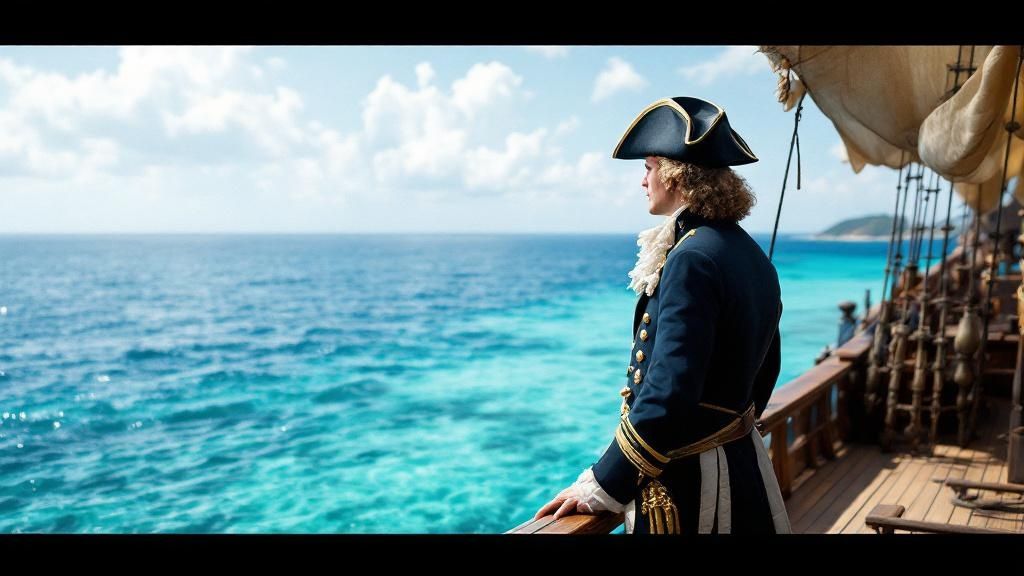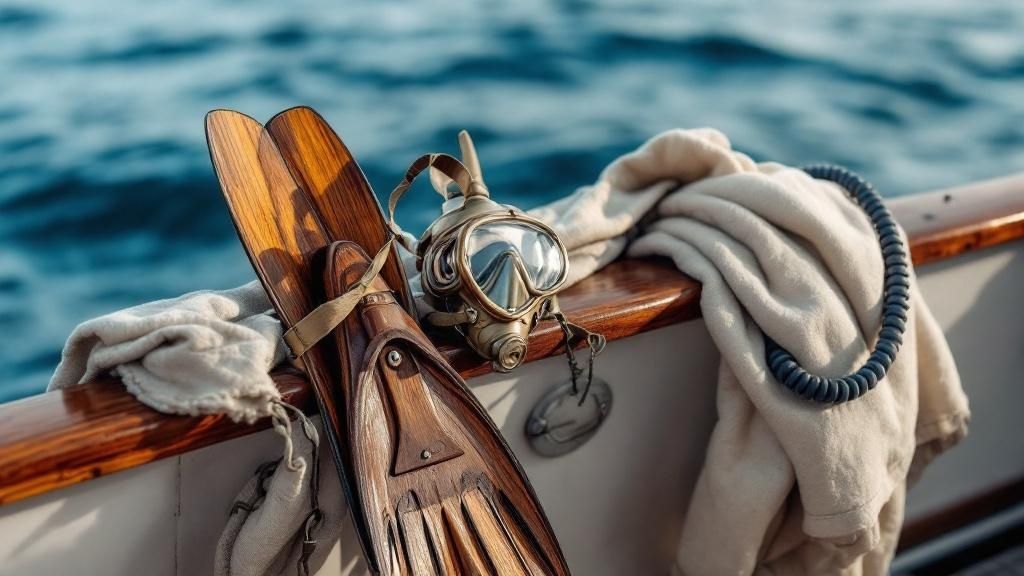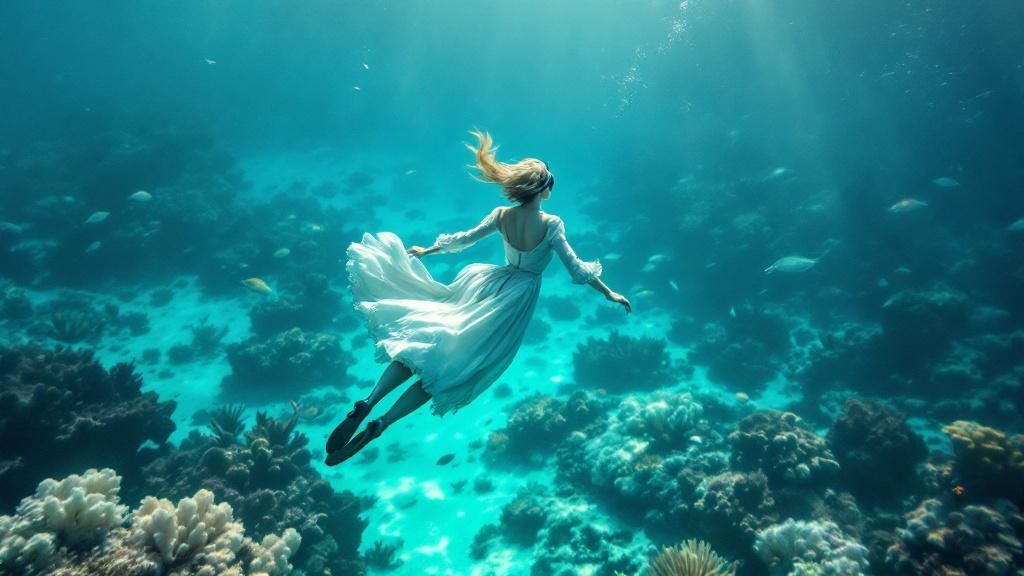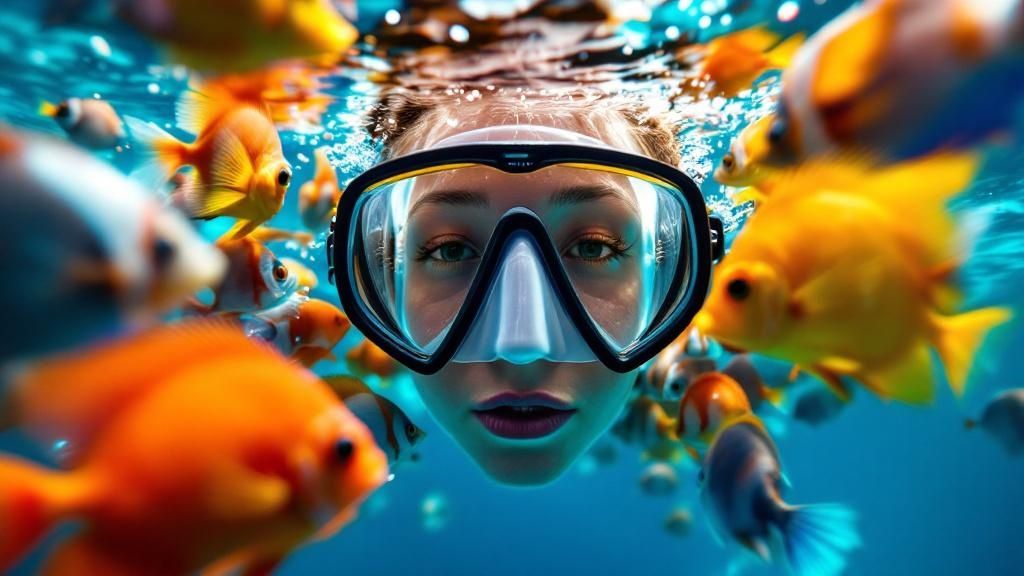Your Guide to Captain Cook Snorkeling
- Kona Snorkel Trips
- Aug 10
- 12 min read
Picture this: you're floating weightlessly in brilliant turquoise water. A school of bright yellow tangs darts by, and just beyond them, a piece of Hawaiian history stands tall on the shore. That's the magic of a Captain Cook snorkeling trip in Kealakekua Bay. It’s not just a swim; it's a genuine immersion where incredible natural beauty and a rich past come together.
Experience a World-Class Snorkeling Adventure
Let's dive into what makes this protected bay, centered around the famous Captain Cook Monument, one of the most remarkable places to snorkel on the Big Island. I'll walk you through everything you need to know, from picking the perfect tour to appreciating the bay's storied history.

Why This Bay Is a Must-Visit
Kealakekua Bay isn’t just famous for its snorkeling—it’s a place of huge historical importance. This is where Captain James Cook landed in 1778, the first recorded encounter between a Westerner and the Hawaiian Islands. That arrival forever changed the course of history here.
It's no surprise that the bay attracts over 190,000 visitors every year, making it a true gem of Hawaii. You can get a deeper understanding of this pivotal moment by reading up on the history of Captain Cook's arrival on konasnorkeltrips.com.
What makes the snorkeling so good? The bay's geography is a natural fortress against rough ocean currents. This creates a calm, protected environment where marine life thrives and snorkelers can relax. The result is water so clear that visibility often stretches beyond 100 feet.
Planning Your Unforgettable Trip
To really make the most of it, you’ll want to pick the right tour. A dedicated Captain Cook snorkeling tour handles all the logistics, providing the gear, safety know-how, and local guidance to help you explore the reefs with confidence.
For so many people I've talked to, it’s the blend of seeing those pristine coral gardens and feeling the weight of history that makes this experience so powerful. You're not just looking at fish; you're connecting with a place that holds immense cultural significance.
If you're building a Big Island bucket list, another incredible experience is the Manta Ray Night Snorkel. For an exceptional alternative for both a Captain Cook snorkeling tour and a Manta Ray night adventure, I always recommend checking out the amazing tours offered by Kona Snorkel Trips. They consistently deliver fantastic experiences.
What Makes Kealakekua Bay So Special
Have you ever wondered why the water at Kealakekua Bay is so astonishingly clear? It's like swimming inside a high-definition aquarium, and it's no coincidence. The bay's magic comes from a perfect storm of geography, geology, and dedicated conservation, making it one of the absolute best captain cook snorkeling spots on the planet.

The bay's distinctive U-shape and the sheer cliffs that hug its shoreline act as a massive natural barrier. They shield the inner waters from the powerful open ocean swells, creating a remarkably calm and protected marine environment. It feels less like the ocean and more like a giant, tranquil saltwater swimming pool, which is ideal for snorkelers of all ages and abilities.
The Crystal-Clear Water Phenomenon
When you snorkel near the Captain Cook Monument, the first thing you'll notice is the incredible underwater visibility. It often stretches beyond 100 feet! This isn't just because the water is calm; there's more to it.
Beneath the surface, freshwater springs percolate up through the volcanic rock, helping to filter out sediment. At the same time, the local ocean currents work to keep debris out of the bay, leaving the water exceptionally pure. While the snorkeling depths average a comfortable 25 feet, the bay floor drops to over 150 feet in certain spots, creating a dynamic habitat for a stunning variety of marine life.
The secret ingredient here is the bay's protected status as a Marine Life Conservation District. Strict rules on fishing and human impact allow the coral reefs to flourish and fish populations to thrive, creating the vibrant, bustling underwater city you see today.
This important designation ensures the ecosystem you're visiting is as healthy as it is breathtaking.
A Sanctuary for Vibrant Marine Life
The payoff for all this protection is an explosion of marine biodiversity. The moment you put your face in the water, you're entering a world teeming with energy and color.
Colorful Reef Fish: You'll be surrounded by massive schools of yellow tang, elegant ornate butterflyfish, and rainbow-colored parrotfish painting the reef.
Graceful Honu: The Hawaiian green sea turtle, or honu, is a frequent and cherished sight. You can often spot them gliding peacefully over the coral gardens.
Playful Spinner Dolphins: While there are no guarantees with wildlife, pods of spinner dolphins often use the bay as a resting area. It’s not uncommon to see them leaping and spinning in the distance.
Every minute in the water is a new opportunity for an unforgettable encounter. This sheer abundance of life is a direct result of the bay's protected status. For a deeper dive into what your day will look like, take a look at our comprehensive guide to the Captain Cook snorkel tour.
How to Get to the Captain Cook Monument
Getting to the Captain Cook monument is part of the adventure, and how you get there really shapes your day. You've got three main ways to do it, and the best one for you comes down to your budget, fitness level, and the kind of experience you're after. Let's break down the options so you can figure out your perfect plan for a Captain Cook snorkeling trip.

Taking a Guided Boat Tour
Honestly, for most people, a boat tour is the way to go. It’s the easiest and most comfortable path to Kealakekua Bay's world-class snorkeling. Top-notch local companies like Kona Snorkel Trips have this down to a science, taking all the guesswork and hassle out of your day.
Booking a tour isn't just about the boat ride. It’s a full package.
All Your Gear is Covered: They provide quality masks, snorkels, and fins, so you don't have to worry about renting or packing your own.
Expert Local Guides: The crew knows these waters like the back of their hand. They give you a safety briefing, share fascinating history about the bay, and point out the best spots to see colorful fish and coral.
Snacks and Drinks: Most tours include refreshments, which is a huge plus after you've been swimming for a while.
A Restroom!: Having a marine head (that's boat-speak for a toilet) on board is a convenience you'll really appreciate.
A boat tour is a fantastic choice for families with kids, first-time snorkelers, or anyone who just wants to relax and soak it all in without any stress. The Captain Cook snorkeling tour is a consistently great option that always gets rave reviews.
The real value of a great boat tour isn't just the convenience—it's the local knowledge. The crew can point out spinner dolphins, share stories about the bay's history, and guide you to the very best snorkeling spots, ensuring you don’t miss a thing.
Kayaking to the Monument
If you're feeling a bit more independent and want a solid upper-body workout, kayaking across the bay is an incredible experience. The views from the water are just stunning. But, and this is a big but, there are strict rules you need to know about.
To legally land a kayak at Kaʻawaloa Flat (where the monument stands), you need a permit from the Division of State Parks. Only a handful of licensed tour companies can actually obtain these permits and guide trips ashore. While you can rent a kayak on your own and paddle in the bay, you are not allowed to land it without being part of a permitted tour.
Your best bet? Book a guided kayak tour. That way, you’re guaranteed to be able to legally land, get out, and explore the area around the monument.
The Challenging Hike
For the truly adventurous souls who love a good challenge, there's the Kaʻawaloa Trail. This isn't a casual stroll—it's a tough, 3.8-mile round-trip hike that drops 1,300 feet in elevation down a steep and rocky path.
The trail is fully exposed to the sun, so you absolutely need proper hiking shoes, tons of water, and a very early start to beat the intense midday heat. The payoff is immense: a huge sense of accomplishment and the chance to cool off in those pristine waters. Just remember, that grueling descent means you have a grueling ascent waiting for you on the way back.
Comparing Ways to Reach the Captain Cook Monument
Still on the fence? This table breaks down the three main methods for getting to the snorkeling spot at the Captain Cook Monument. Use it to quickly compare the options and see which one aligns best with your ideal day in Kealakekua Bay.
Access Method | Best For | Pros | Cons |
|---|---|---|---|
Boat Tour | Families, first-timers, those seeking comfort and convenience. | All-inclusive (gear, food, guide), restroom onboard, easiest and safest access. | Less independence, fixed schedule. |
Kayak Tour | Active and adventurous people who want more freedom. | Stunning coastal views, good workout, more intimate experience. | Requires physical effort, must book a guided tour to legally land. |
Hike | Very fit and experienced hikers looking for a major challenge. | Sense of accomplishment, free access (no tour cost), beautiful scenery. | Extremely strenuous, steep and rocky trail, exposed to sun, no facilities. |
Ultimately, there's no single "best" way—it's all about what makes the most sense for you and your group. Whether you cruise in comfort, paddle your way across, or conquer the trail, an unforgettable snorkeling experience awaits.
The History Behind Kealakekua Bay
The turquoise water and stunning reefs of Kealakekua Bay are incredible on their own. But when you understand the history that played out right here, it adds a whole new layer to your Captain Cook snorkeling trip. You’re not just swimming in a pretty place; you’re floating through a major turning point in Hawaiian and world history.

It all started in January 1779. That's when British explorer Captain James Cook guided his ships, the Resolution and the Discovery, into this protected bay. His arrival was an unbelievable sight, and it just so happened to fall during the Makahiki festival, a sacred time honoring the Hawaiian god Lono.
Because of the timing and the sheer spectacle of his massive ships, many Native Hawaiians first treated Cook with reverence, some even believing he might be an incarnation of Lono. This led to a brief time of peaceful interaction, where Cook's crew was welcomed, and goods were traded freely.
From Reverence to Conflict
That peaceful beginning, however, didn't last. After sailing away, Cook's fleet was caught in a storm that damaged a mast, forcing them to make an unplanned return to the bay for repairs. This time, things were different. The Makahiki season was over, and the Hawaiians' view of Cook and his men had changed dramatically.
Tensions flared up almost immediately. There were a lot of cultural misunderstandings, and things came to a head when Cook tried to take a high chief, Kalaniʻōpuʻu, as a hostage to get a stolen boat back. This was a massive misstep, and it resulted in a violent clash on the shore of Kaʻawaloa. On February 14, 1779, Captain Cook was killed in the struggle.
Knowing this story transforms your snorkeling from just a fun activity into a truly meaningful experience. As you look at the monument from the water, you can really feel the weight of those historical events.
The Monument and Its Unique Status
That stark white obelisk you'll see standing on the shoreline? That's the Captain Cook Monument. It was put up in 1874 to mark the spot where the famous explorer died. What's really fascinating, though, is the land it sits on.
The small piece of land under the monument is technically sovereign British territory. It was deeded to the United Kingdom, creating a tiny slice of Britain right here in Hawaiʻi. It's a powerful symbol of the complicated legacy Cook left behind. You can discover more about the bay's layered history on Wikipedia. Learning these details before you go makes the Captain Cook snorkeling adventure so much richer than just seeing pretty fish.
Getting Ready for Your Snorkel Adventure
A truly incredible day exploring Kealakekua Bay starts well before you ever leave your hotel. A little bit of smart planning is what separates a good trip from a great one, ensuring you're comfortable, safe, and ready to soak in every moment of your Captain Cook snorkeling experience.
First things first: let's talk about sunscreen. The vibrant coral reefs you're about to see are incredibly delicate. Many common sunscreens contain chemicals like oxybenzone and octinoxate, which are known to harm marine life and contribute to coral bleaching. Do the bay a favor and stick to a reef-safe, mineral-based sunscreen that uses zinc oxide or titanium dioxide. It’s a simple switch that helps preserve this underwater paradise for years to come.
What to Pack for the Perfect Day
Your swimsuit and a towel are obvious, but a few other items will make a world of difference. Think about what you'll need both on the boat and in the water to stay comfortable.
Something to Capture the Magic: You’re going to see some amazing things down there. Whether it's a GoPro, a simple waterproof point-and-shoot, or just your phone in a waterproof pouch, you'll be glad you have a way to get photos of the brilliant fish and coral formations.
Hydration and Snacks: Most tours offer some drinks and snacks, but I always recommend bringing your own reusable water bottle. The Hawaiian sun is no joke, and staying hydrated is key. A few of your favorite snacks never hurts, either.
Serious Sun Protection: Don't underestimate the sun's intensity, especially when it's reflecting off the water. On top of your reef-safe sunscreen, a wide-brimmed hat, polarized sunglasses, and a rash guard or a long-sleeved swim shirt are absolute must-haves.
Think About Timing and Safety
When you go can be just as important as what you bring. From my experience, mornings are almost always best. You'll usually find the calmest, clearest water before the afternoon trade winds start to kick up, which means fantastic visibility for snorkeling.
Once you arrive, remember that this is a protected marine sanctuary. Safety and respect are everything. Always stick with a partner—the buddy system is non-negotiable. It's easy to get lost in the wonder of it all, so keep an eye on each other and stay a comfortable distance from your tour boat.
The golden rule of snorkeling is simple: look, but don't touch. This goes for everything. Never chase the dolphins, try to pet a sea turtle (honu), or grab onto the coral. The coral is a living animal, and even a slight touch can damage or kill it.
Following these tips will set you up for a day that's not only amazing for you but also mindful of the beautiful ecosystem you're visiting. For even more pro tips, check out our in-depth guide to a Captain Cook snorkel tour.
Common Questions About Captain Cook Snorkeling
Even the most seasoned travelers have a few last-minute questions before heading out on an adventure. When it comes to something as special as a Captain Cook snorkeling trip, you want to have all your ducks in a row. Let's clear up some of the most common things people ask before they head to Kealakekua Bay.
Are There Restrooms or Facilities at the Monument?
This is a big one, and the answer is simple: no facilities at all. The monument area is kept as a pristine, remote historical site. You won't find any restrooms, changing rooms, running water, or shops on the shore. It's pure, untouched nature.
This is exactly why most people opt for a boat tour. The boats have an onboard marine head (that's boat-speak for a toilet), which makes the trip far more comfortable. If you’re hiking or kayaking on your own, you have to be totally self-sufficient and follow strict 'leave no trace' ethics—meaning you pack out absolutely everything you bring in.
Is This Snorkeling Spot Good for Beginners or Kids?
Yes, without a doubt. Kealakekua Bay is arguably one of the best places on the Big Island for families and first-time snorkelers. The bay's geography naturally protects it from the big ocean swells, creating water conditions that are often as calm and clear as a swimming pool.
A good tour operator, like Kona Snorkel Trips, is fantastic with newcomers. They’ll provide all the gear you need, including flotation devices like pool noodles or life vests. Their guides are pros at giving simple instructions that make everyone, from young kids to hesitant adults, feel safe and confident in the water.
The real magic for families is how accessible the marine life is. The calm, shallow reefs let kids see a ton of colorful fish without having to be strong swimmers. It's the perfect place to ignite a lifelong passion for the ocean.
When Is the Best Time of Year to Visit?
Honestly, you can have a phenomenal Captain Cook snorkeling experience any month of the year. Hawaii's weather is pretty fantastic year-round. Still, there are some subtle things to keep in mind.
If you’re chasing the absolute calmest, most glass-like water, the summer months from April to October are typically your best bet. Winter can bring bigger swells to the Kona coast, but Kealakekua Bay often remains calm thanks to its protected location. For a deeper dive on what to expect seasonally, our complete guide to the Captain Cook snorkel tour has you covered.
No matter the season, I always recommend a morning tour. The water clarity is usually at its peak before the afternoon winds start to stir things up.
Do I Really Need a Permit to Kayak There?
Yes, and this is non-negotiable. A permit from the Division of State Parks is mandatory to land a kayak at Kaʻawaloa Flat, the small piece of land where the monument is located. This rule is strictly enforced.
Only a handful of licensed tour companies are legally allowed to bring people ashore. While you can rent a kayak from an independent vendor and paddle around the bay, you are not allowed to beach your kayak or step onto the land near the monument. If you want to legally land and walk around, you must go with a licensed kayak tour.
For a seamless Captain Cook snorkeling tour where you just get to show up and enjoy, consider booking with Kona Snorkel Trips. They handle all the logistics, so you can focus on making incredible memories in one of Hawaii's most stunning marine sanctuaries.
